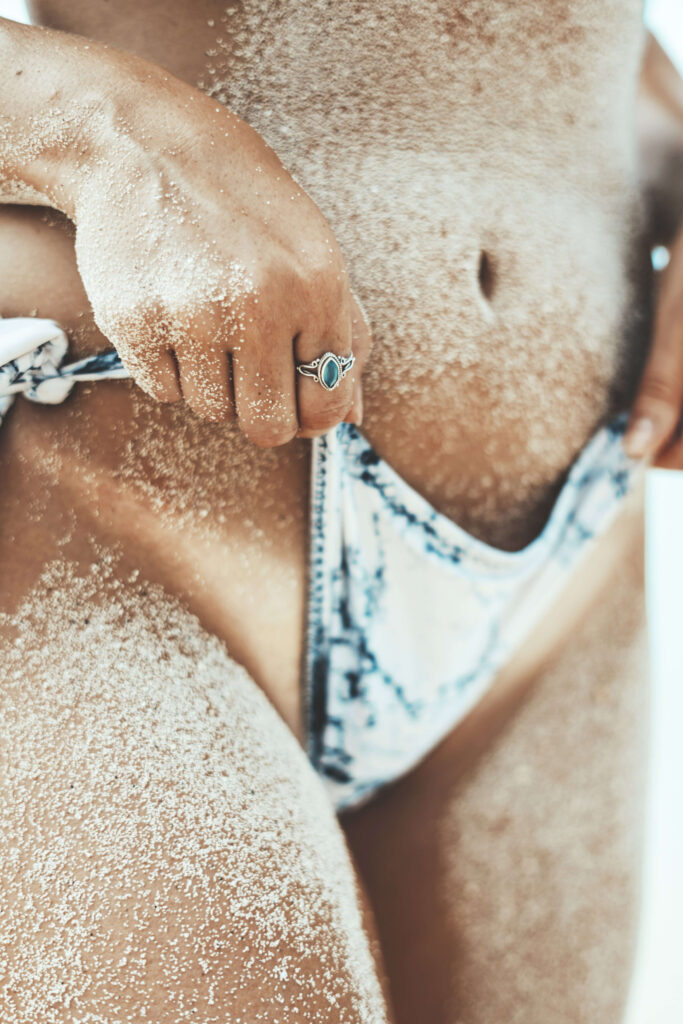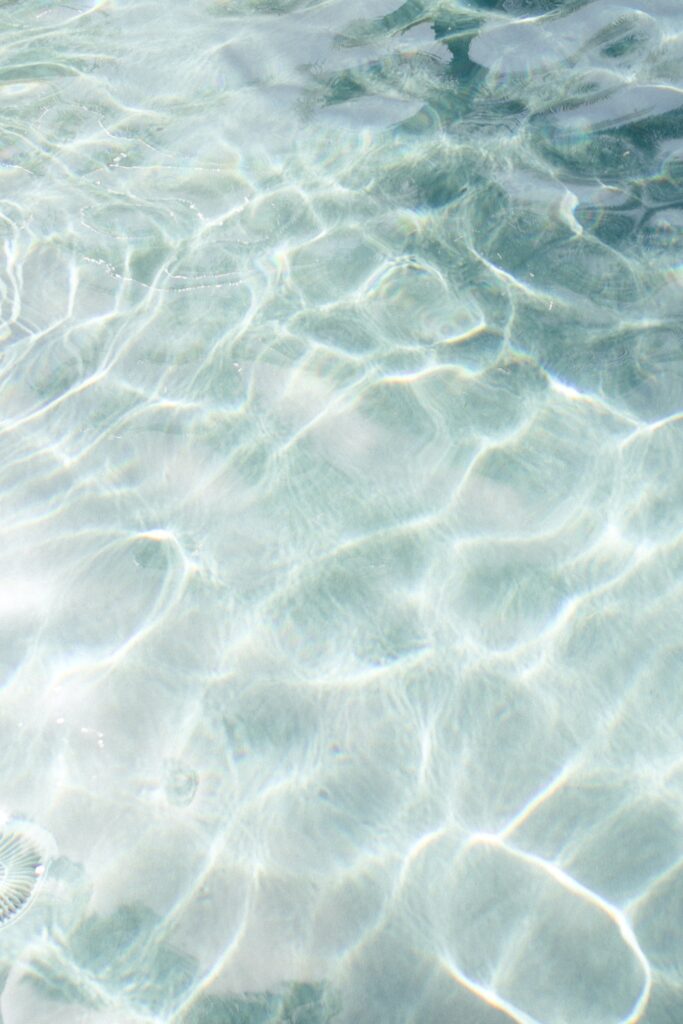Summer is here, the sun strong and bright, can only mean one thing — sunscreen, sunscreen, and even more sunscreen.
Like many, I’ve been wearing sunscreen before I could walk. But why do I have so many questions about it? What even is SPF, UVA, UVB? What’s the difference between mineral (aka physical) and chemical sunscreen? What’s Reef Safe sunscreen? And, how do we apply it correctly? Keep scrolling because we’re diving into everything your sunscreen bottle doesn’t tell you so you can fully equip yourself for a day under the sun.

The sun, our beautiful source of life, also causes unwanted signs of aging and health concerns because of its UV rays. UVB rays are the reason you get a little or a lot of sunburn. While UVA rays penetrate deep into your skin, causing early signs of aging — like wrinkles, sagging, and spots. Together, they both increase your risk of skin cancer. Sunscreen works to either block, reflect, deactivate, or absorb the rays and release them as heat.
Sun Protective Factor (SPF) is the first thing many of us turn to when trying to pick the perfect sunblock to protect us from harmful rays. For the most part, SPF does a good job of telling us how effective a product is at blocking UVB rays. Keep in mind, the same can’t be said for UVA rays. The Skin Cancer Foundation says, “the number tells you how long the sun’s UVB rays would take to redden your skin if you apply the sunscreen exactly as directed compared with the amount of time without sunscreen. So, if you use an SPF 30 product properly, it would take you 30 times longer to burn than if you used no sunscreen.”
However, don’t let this formula make you believe that a higher SPF is always the best bet. The Environmental Working Group (EWG), a non-profit organization dedicated to protecting human health and the environment (otherwise known as my personal eco-friendly, clean product guru), is concerned with high-SPF claims — anything above SPF 50+. EWG has found that the ratio of UVA protection decreases as SPF increases. Many aren’t aware that SPF doesn’t accurately define how much UVA protection they’re getting. Thus, misleading users to believe that they are better protected when, in reality, they may be risking higher exposure. SPF 100 users typically think they can stay out in the sun longer, don’t need shade, or can skip reapplying — all of which are false. Broad-spectrum sunscreens with zinc oxide and titanium dioxide (in mineral sunscreen) filter UVA rays the best.

You are also probably wondering what’s mineral (aka physical) and chemical sunscreen, and how are they different? Mineral sunscreen uses a mixture of titanium dioxide and zinc oxide. These ingredients act as a physical barrier between the sun’s UV radiation and your skin. On the other spectrum, chemical sunscreen is formulated with ingredients like oxybenzone, avobenzone, and octisalate. These chemicals absorb and deactivate the UV rays. This probably explains why mineral and chemical sunscreen look and rub into your skin differently.
When it comes to choosing between mineral and chemical formulas, I like to shop for mineral-based brands for two reasons — one to protect my health and two, to protect the last thriving reefs on our planet. Found in more than 3,500 chemical sunscreen products, oxybenzone, may disrupt the body’s natural harmony and throw the hormone system off balance. Countless studies have found that oxybenzone easily trickles through the skin, leaving behind traces of its remnants in breast milk, urine, and blood. High-SPF products pose a greater risk as they have higher concentrations of oxybenzone.
Oxybenzone (I’ll keep saying oxybenzone repeatedly so you can’t possibly forget which ingredient to avoid), doesn’t just stop at confusing our bodies. What isn’t absorbed washes off into our oceans and contributes to coral reef bleaching. Oxybenzone, butylparaben, octinoxate, and 4-methylbenzylidene camphor (4MBC) have all been proven to harm coral at extremely low concentrations. As little as one drop in 6.5 Olympic-sized swimming pools to be exact. During peak seasons, like mid-July, when most of us can’t deny a dip in the ocean, 14,000 tons or 6 Olympic-size swimming pools worth of these four chemicals are washed into the environment. That’s way, way, way beyond the bleaching point. No wonder Hawaii was the first state to ban 2 of these chemicals, oxybenzone and octinoxate. As if Hawaii needed to give me another reason to escape there, but did anyway!

Why should we protect our ocean’s reefs, and buy mineral sunscreens without these four toxic chemicals? Coral reefs prevent shore erosion by minimizing wave impacts from hurricanes and other devastating storms and support biodiversity by providing for an estimated 25% of all marine life. Beautiful reefs bring us natural, healing medicines, and attract tourists. And if well managed and consciously cared for, provides a sustainable income and employment for people.
If you truly want to protect yourself and our reefs, don’t rely solely on sunscreen. Seek shade, grab your favorite pair of UV-blocking sunnies, and cover up with clothes. Maybe even wear a cute, floppy straw hat or a vintage bucket hat from the 90s.
Things to be mindful of when choosing the perfect sunscreen:
- Stick with a lotion. Sunscreen, when sprayed, doesn’t just hit your skin, it blows onto the sand, sea, and others breathe it in like second-hand smoke.
- Choose a broad-spectrum sunscreen with an SPF of 30 to 50.
- Regardless of the SPF, reapply every two hours. Apply a nickel to a quarter-size amount on your face and a shot glass amount on your body.
- Reef-friendly symbols are not regulated. Always check the active and inactive ingredient labels for oxybenzone, butylparaben, octinoxate, and 4MBC.
- Use a water-resistant sunscreen, which will be more likely to stay on your skin and out of the water.
 We cross vetted, and found mineral, reef-friendly brands that always make everyone’s top sunscreen list:
We cross vetted, and found mineral, reef-friendly brands that always make everyone’s top sunscreen list:
To my fellow eco-friendly, self-care enthusiasts, spread the word to other sun-lovers, and together we can protect our skin, bodies, and reefs!

